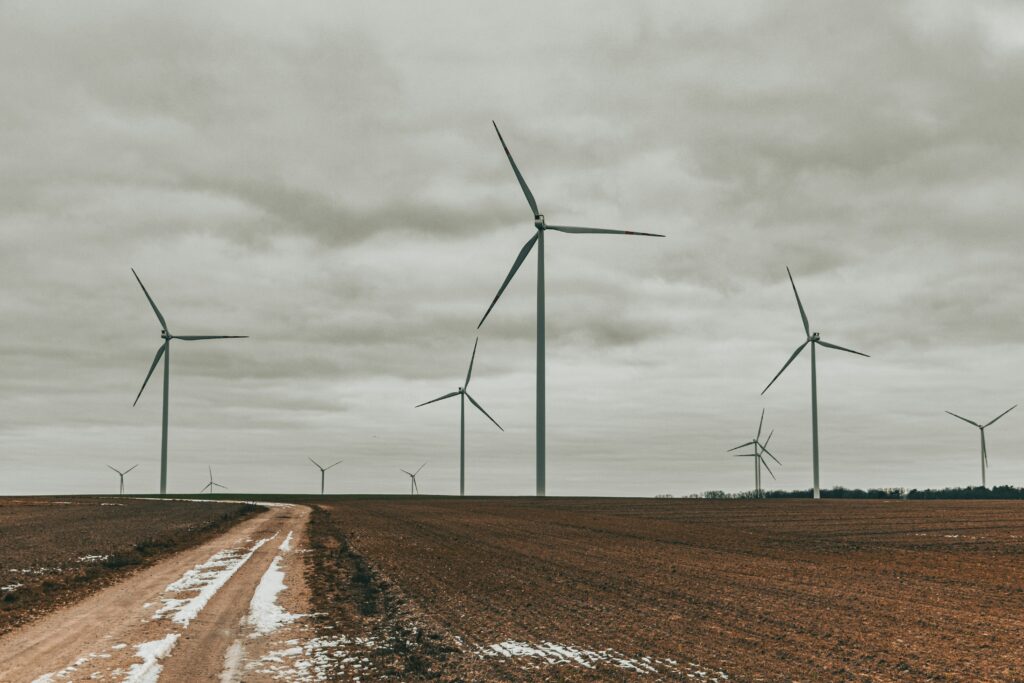Cutting Emissions Now to Secure Europe’s Future

Europe’s climate future depends not just on targets, but the path we take to reach them.
Amélie Laurent and Mark Preston Aragonès from Bellona Europe explain why the EU’s 2035 and 2040 milestones matter as a North Star for competitiveness and resilience. They caution against over-reliance on carbon removals and international credits, and argue that the EU’s credibility on the world stage depends on keeping its climate law focused on real, domestic emissions cuts.
In this conversation, they outline how short-term ambition, not just 2050 neutrality, will determine whether Europe leads or lags in the race to net zero.
The report, More than numbers: EU Climate Targets as the North Star for EU’s competitiveness & climate resilience, calls the EU’s 2035 and 2040 climate targets a “North Star.” Why are these climate targets so crucial?
Amélie Laurent: It is a pivotal moment for EU climate policy. The EU has enshrined climate neutrality by 2050 into law, but that end date alone does not tell us how to actually get there. Without interim waypoints, we risk drifting or delaying action until it is too late. The 2035 and 2040 targets provide direction and discipline. They are markers that ensure Europe is not only moving towards neutrality, but doing so at the right pace. This guidance is critical not only for climate protection but also for economic competitiveness. Targets act as investment signals, shaping how industries plan for the future, where they allocate capital, and which technologies they prioritise. These milestones ensure Europe does not just promise neutrality in 2050, but builds the road to get there step by step.
What would happen if Europe were to follow a slower trajectory towards those goals?
Mark Preston Aragonès: The trajectory matters as much as the destination. A slower path to 2035 would lead to an additional 1.4 billion tonnes of CO₂ in the atmosphere. This is pollution we can never take back. The reason is simple. CO₂ is a cumulative gas. Every extra tonne builds up and lingers for centuries, worsening the climate crisis. That is why the concept of a carbon budget is so important. It is not just about achieving net zero by 2050, but also about the amount of carbon we emit along the way. A steeper reduction trajectory, 79% by 2035 rather than 66%, minimises this build-up and keeps us closer to the 1.5°C limit. Slower action might look easier politically, but it simply locks in greater risks, higher costs, and more disruptive adjustments later on. The earlier we cut, the more breathing room we allow ourselves in the decades ahead.

Your study says: “One tonne of CO₂ not emitted is always preferable to one removed.” Why?
Amélie Laurent: Prevention is always better than cure. Every tonne we avoid emitting today reduces future damages and reduces the burden on future generations. If we lean too heavily on removals, we are essentially saying, “We will keep polluting now, and our children will pay to clean it up later.” That creates moral, economic, and environmental risks. Removals also face limitations. They are slower, more costly, and less certain than cutting emissions at source. Forests can burn, technologies can fail, and promises to offset emissions can collapse. That is why we argue that removals should play a supporting role, balancing residual emissions and eventually enabling net-negative economies, but never become a substitute for the urgent work of reducing emissions. The priority of Europe’s climate framework must remain cutting pollution now, not postponing responsibility.
Bellona calls for the 2040 target to be at least 90%. Why that amount?
Mark Preston Aragonès: “At least” is more than a phrase. It is a safeguard. Without it, 90% risks being treated as a ceiling, when in fact it should be the minimum floor of ambition. Climate change is not static, and science may well demand deeper cuts. Legally embedding “at least” ensures Europe retains flexibility to go further, not weaker. Equally important is how the 90% is composed. We argue that it must be made up primarily, if not almost entirely, of gross emission reductions. If too much of the target is achieved with land sinks, credits or removals, we risk hollowing out the achievement. Strong numbers on reductions provide the certainty that investors and industries need to make deep structural changes. The 2040 milestone must therefore be ambitious in wording and in substance.
Why not let land sinks or forests offset emissions elsewhere?
Amélie Laurent: Forests and soils are invaluable for biodiversity, cooling, and resilience, but they are too fragile to be treated as permanent offsets. A forest that is counted as a carbon sink today can be wiped out by fire, drought or pests tomorrow. That volatility makes them unreliable as a substitute for industrial emission cuts. We believe land use deserves its own dedicated pillar, strengthening ecosystems for their many co-benefits while acknowledging the risks. If industries are told they can rely on forests, they may delay their own transition. That would undermine climate neutrality across the economy. Protecting land sinks is vital, but we must not misuse them as a free pass for polluters.
International credits are back in the debate. Why is that risky?
Mark Preston Aragonès: International credits have a long and controversial history. The Clean Development Mechanism of the Kyoto era produced cheap credits that often failed to deliver real reductions. Many projects overstated their climate benefits, creating the illusion of progress while emissions continued. Today’s frameworks under the Paris Agreement are stronger, but the same risks remain. Methodologies are still being written, oversight is uneven, and the temptation to outsource ambition is real. For Europe, the bigger issue is credibility. The EU climate law was framed as a domestic neutrality law. Europe would become the first climate neutral continent. If we start outsourcing reductions abroad, that claim no longer holds. It becomes a paper exercise rather than a lived reality. Our position is clear. Credits, if used, should be above the 90 percent target, not within it. Only then can they enhance ambition instead of weakening it.

The proposal also introduces “sectoral flexibility”, allowing some sectors to underperform if others overperform. Why does Bellona see this as risky, and how could it undermine climate neutrality across the broader economy?
Amélie Laurent: Flexibility sounds reasonable in theory, it’s meant to help industries adapt. But in practice, it risks becoming an excuse for delay. We’ve already seen that when flexibilities are too generous, they discourage the deep structural transitions we actually need, like low-carbon agriculture, clean industry, or electrified transport.
If one sector, like power generation, overperforms, that should raise the overall level of ambition; it shouldn’t be used to let other sectors underperform. Otherwise, we create a patchwork of progress, where the EU meets its target on paper but fails to decarbonise its real economy.
Flexibility between sectors also reduces regulatory certainty. Businesses need clear signals to plan long-term investments. If they think targets might shift depending on another sector’s performance, they won’t commit capital. So yes, some flexibility is necessary, but only if it drives ambition upward, not downward.
How does climate ambition connect to Europe’s competitiveness?
Mark Preston Aragonès: Because the green transition is not optional. It is inevitable. Every economy in the world will have to decarbonise. The only question is who leads, and who follows. Those who move first will capture the industries of the future, from renewables to green hydrogen to clean mobility. Those who hesitate will import these technologies instead of exporting them. Cutting emissions by 90% is not about deindustrialisation. It is about reindustrialisation. It means reshaping Europe’s economy around clean technologies, resilient supply chains and sustainable industries. Competitiveness and climate action are not in tension. They are aligned. Ambition creates certainty for investors, reduces exposure to fossil volatility, and ensures China or the United States does not outpace Europe. Delay, by contrast, weakens Europe economically as well as environmentally.
The International Court of Justice recently linked inadequate climate action to breaches of international law. Will this change EU politics?
Amélie Laurent: Absolutely. It reframes climate action as a legal duty, not just a policy choice. If failing to act on climate change could breach international law, then governments must view inaction as more than mere political hesitation. It could become a matter of accountability in courts. This adds weight to the science and economics already pushing for faster action. It also makes clear that the costs of inaction are not hypothetical. The EU itself estimates that inadequate climate action could cost up to 7% of GDP by the end of the century. And that is without counting tipping points and systemic shocks. Legal, economic and physical realities are converging, and they all point towards the same conclusion. Ambition now is cheaper, safer and more just.
If you had a quick conversation with Commission President von der Leyen before COP30, what would you say?
Mark Preston Aragonès: I would stress the importance of leadership. Europe must arrive on the international stage with clarity, ambition, and integrity. That means putting forward a 2035 NDC and a 2040 target that are transparent, ambitious, and based on real reductions, not creative accounting. If we cut corners with credits or vague numbers, we lose credibility at home and abroad. If we lead with a clear, science-based pathway, others will follow. Europe has enormous soft power in climate diplomacy. But leadership means showing the right way, not teaching others that shortcuts are acceptable. The message I would give is simple. The credibility of Europe’s claim to climate neutrality rests on what we do in the next 10 to 15 years. Be ambitious. Be transparent. And do not compromise on integrity.